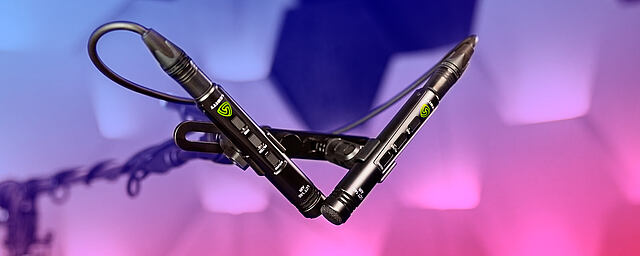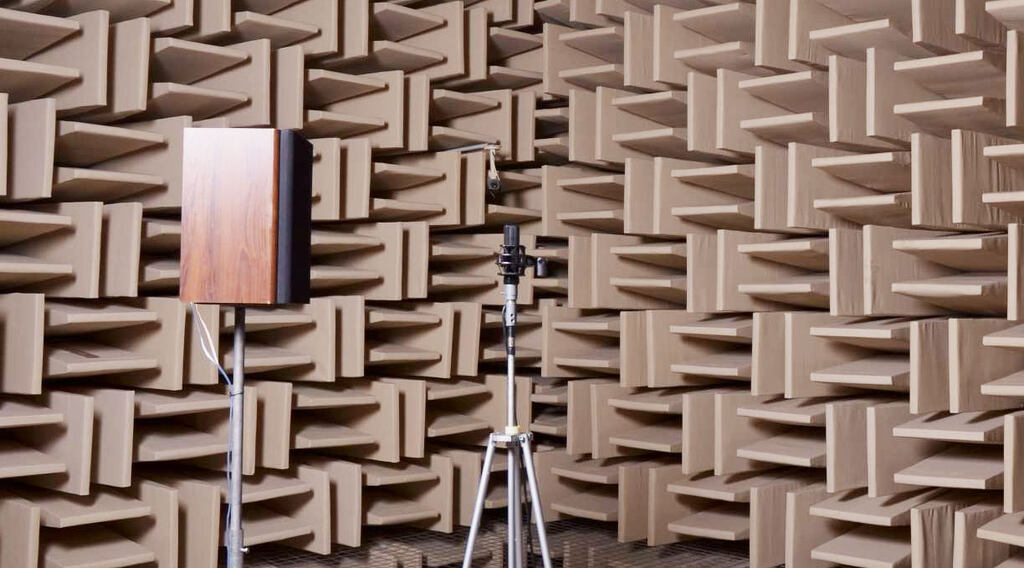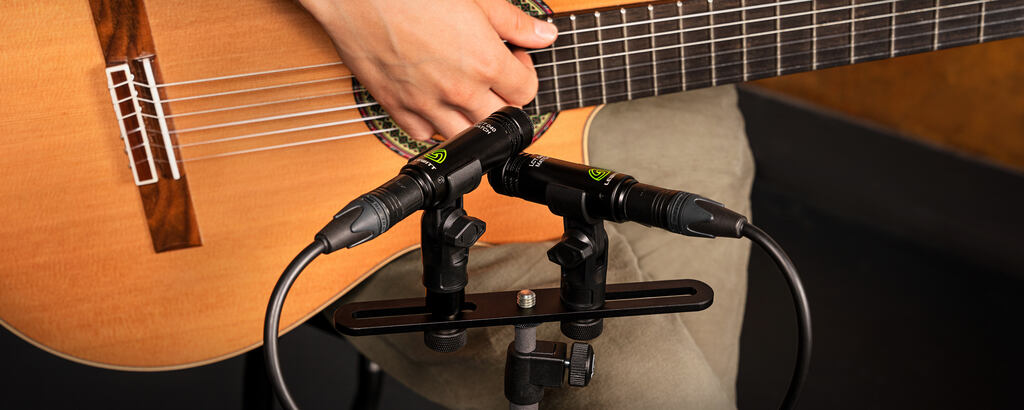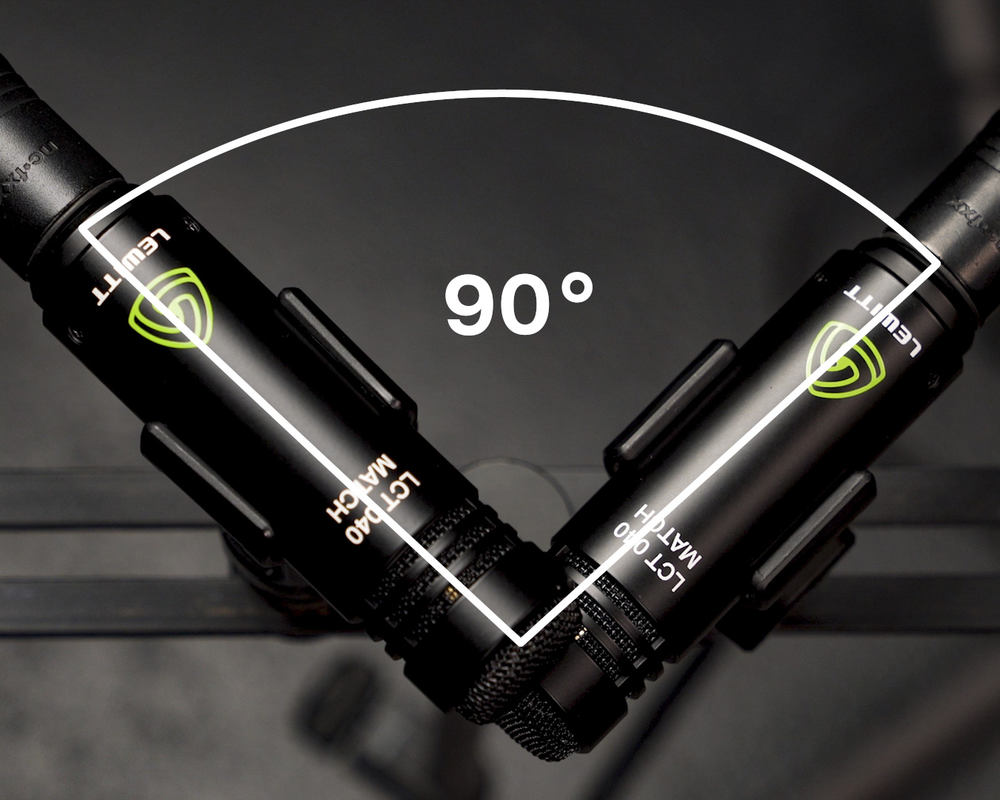
Blog
True love for great sound unites us.
Blog
True love for great sound unites us.

I'm sure you have heard about "matched pairs" in the recording world.
In this blog, we will look at the facts of microphone matching, debunk some myths, and answer your question: Do I need a matched pair?
Matched pairs of microphones are used to record in stereo. To recreate a lifelike audio experience, the microphones should sound identical.
The best way to achieve that is to use microphones of the same brand and model and match the following specifications as closely as possible:
Let's examine why those two specifications are essential to achieve a realistic stereo field.
Sensitivity
If one microphone has a lower output (sensitivity) than the other, the stereo field will tilt to one side.
Sometimes, it can be fixed by adjusting the gain of one of the channels until the audio image sounds correct.
Using a non-matched pair for stereo recording can create problems with the balance, making mixing harder and consuming valuable time.
Frequency response
If the frequency response between two mics differs too much, specific notes will hang more on one side, which is specifically audible for instruments with sustained notes (Strings, horns, choir, etc.).
The results are unbalanced recordings; sometimes, specific notes will "travel" in the stereo field while ringing out.
For ideal and hassle-free stereo recordings, a matched pair of microphones and digitally controlled preamps with a stereo-link function, like the CONNECT 6 audio interface, is the way to go!
Your mix will have fewer problems, and your stereo recordings will be vibrant and lifelike.
Matching sensitivity can be a labor-intensive task.
Measure the microphone, look at the data, open the microphone, and adjust the sensitivity through trim pots. Some models have the trim pots accessible from the outside to save time. Then, close the mic and start the process from the beginning.
As you can imagine, this way of working is very labor-intensive and one of the reasons why matched pairs cost more from some brands.
"Matching per hand" is prone to errors because every human can have a bad day.
For matching the frequency graphs, there was a method where the graphs were printed out on paper, held against a window, and matched in that way.
Nowadays, that process is mainly replicated on a computer screen, sometimes manually.
When we started to develop our matched pair products, I played secret shopper and contacted many microphone manufacturers.
I asked different microphone manufacturers about their matching process and how they ensure that the microphones are matched as closely as possible. Their answers ranged from insightful and honest to hilarious and somewhat questionable. Some never answered at all.
If you want to buy a matched pair, I recommend contacting the brand and asking about their matching process.
We always strive to make our products as technically excellent as possible while keeping an attractive price point so everybody can create fantastic recordings.
This is the same for our matched microphone pairs, the LCT 040 MATCH stereo pair, and the LCT 140 AIR stereo pair.
When we set out to create matched pair microphones, we wanted to make them so good that nobody could hear the difference between the two microphones in a pair.
To achieve this, we set out to determine how close our tolerances in specifications need to be until even the most trained ears can not hear a difference between the microphones anymore.
Through research work, we learned how close to each other our matched pairs needed to be.
We developed a production process that ensures that these high standards are met for every matched pair of microphones we sell.

Step 1: Sensitivity matching
First, we need to ensure the microphones all have the same sensitivity. This means at a given sound pressure level, they produce the same voltage at the XLR output. Our LCT 040 MATCH and LCT 140 AIR have a unique technology built in to make that process very accurate and efficient.
They have a built-in microcontroller that can receive data from our measurement equipment over the XLR connection. The microcontroller can also change the polarization voltage to increase or decrease the sensitivity of the microphone.
Here is a step-by-step process:
Step 2: Frequency response matching
The next step is to find the microphones with the most identical frequency responses matching our requirements.
If we produce a batch of 5000 microphones, we measure the frequency response of all of them inside an anechoic chamber.
All data is stored inside our measurement system and linked to the serial number of the microphone.
Our matching algorithm looks for the most identical matches and pairs 2 serial numbers. Those 2 microphones are then put inside a “matched pair” packaging.
At the end, you get 2 microphones that are indistinguishable by ear. This ensures accurate capture of audio for stereo recordings.
Through these modern production processes, we can ensure that every matched pair we produce aligns with our very high standards. Another benefit is that the stereo-matching process does not cost the customer extra.
We are proud to offer our matched pairs at the same price as two single microphones.
The LEWITT matched pair microphone lineup

When you will highly benefit from using a matched pair:
Let's say you want to record a string quartet in a room built and designed for classical music. It sounds excellent in the room. You want to capture the audio as accurately and realistically as possible. Or you want to capture location sound, or ambience for a movie.
Again, the goal is to sound as true to life as possible. When you close your eyes while listening back, you want to feel as if you are "there".
You will highly benefit from a matched pair!
When the benefits are small:
Do you want to record drum overheads for a modern rock/metal production with many tracks and close mics on everything? There will be little benefit to using a matched pair over a non-matched pair. In fact, some producers use completely different microphone models to achieve maximum stereo width.
After all, the more difference between the left and right channels, the wider the stereo will sound. But now we are far from realism.
Regardless of matching, microphone placement is still one of the most critical factors in good stereo recordings.

As I mentioned before, the best way to use your matched microphones is for stereo recording.
To make sure that you get great results, there are a few things you need to consider:
Set the gain
To get the best stereo effect, both channels should have the exact same gain settings.
The best way to do it is to link the two input channels on your audio interface. Then, both channels have the same exact gain setting. CONNECT 6, our audio interface, has this feature. Some other interfaces might not have the functionality.
In that case, see if you can at least set the gain digitally. That usually means you can put in the exact gain number by hand. Then, you can set the exact same gain for both channels by using the same gain number on each channel.
If your interface doesn't have both options available, try to match the gain as best as you can by ear and by fader/knob positions.
Microphone placement
The most important factor to get great stereo recordings is microphone placement. We have a separate blog about the whole topic. You can learn about the different stereo techniques, when to use them, and listen to sound samples in the video.
Go to the stereo recording techniques blog.
That's it for the topic of matched-pair microphones. I hope you learned something and can decide for yourself if you should get a stereo pair or not. If you have any further questions, feel free to get in touch through social media or email!